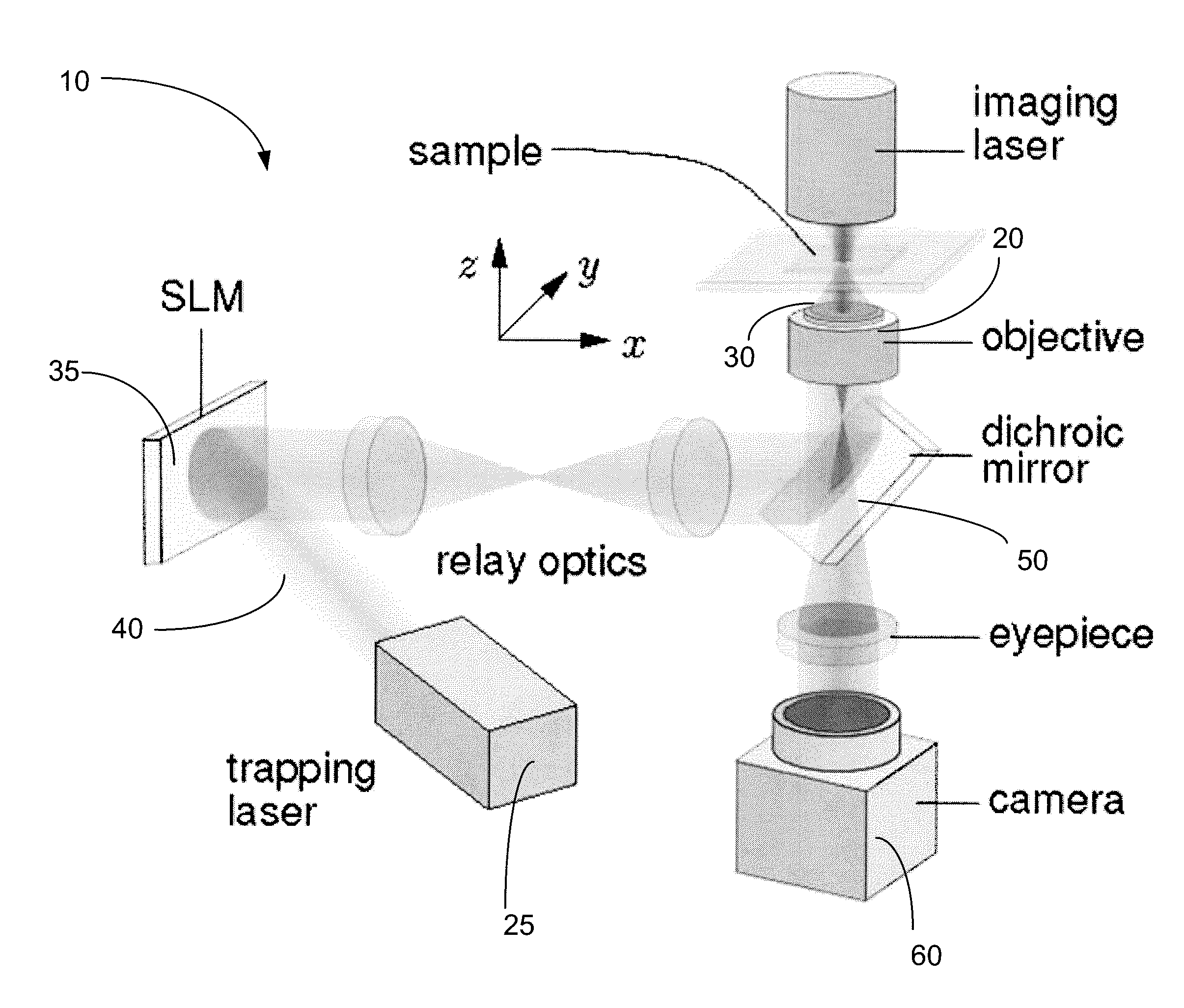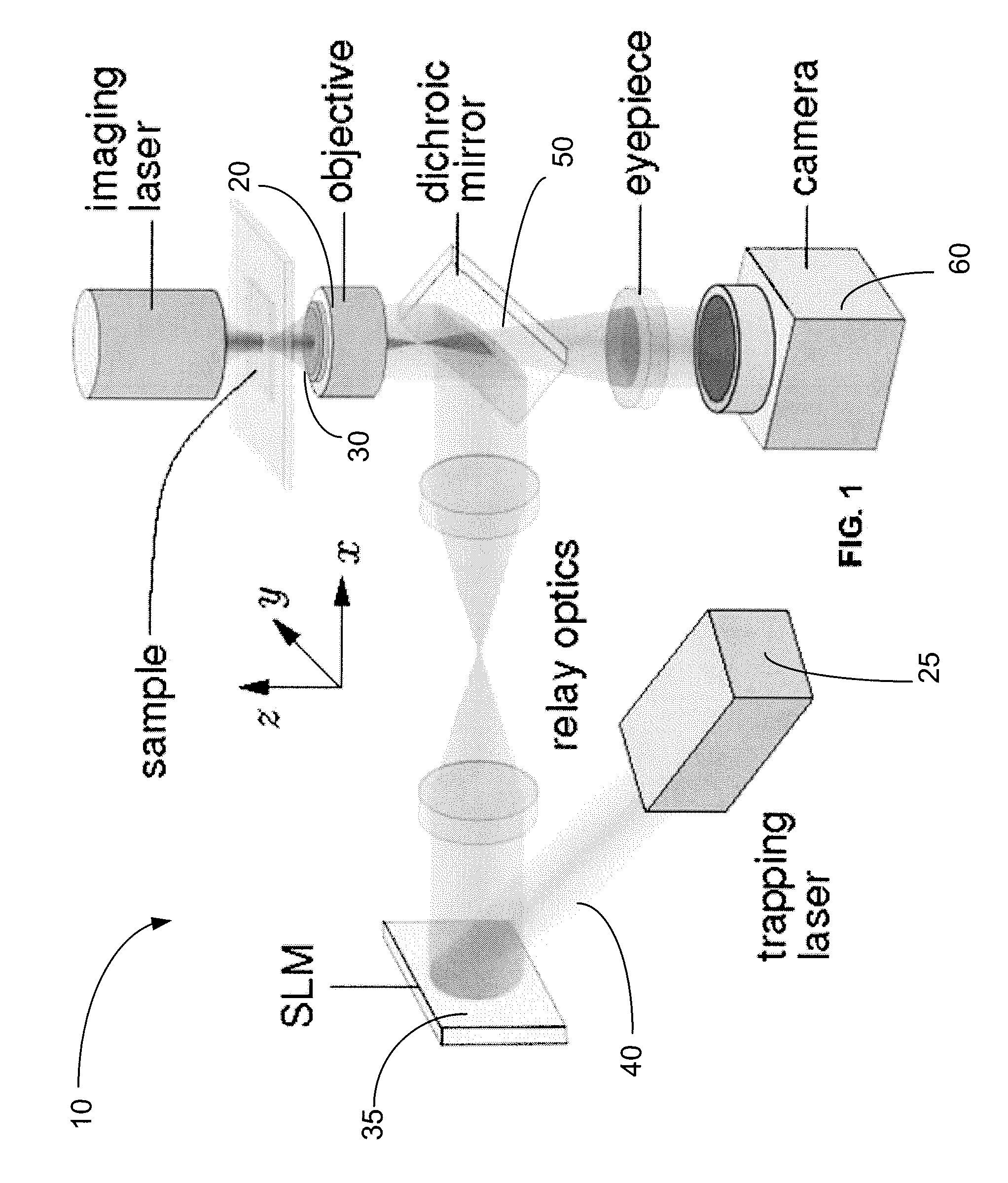Holographic microscopy of holographically trapped three-dimensional nanorod structures
a three-dimensional nanorod and holographic microscopy technology, applied in the field of holographic microscopy of holographically trapped three-dimensional nanorod structures, can solve the problems of reducing imaging speed, adding substantial complexity, and no complementary method in the prior art for examining optically trapped structures
- Summary
- Abstract
- Description
- Claims
- Application Information
AI Technical Summary
Benefits of technology
Problems solved by technology
Method used
Image
Examples
Embodiment Construction
[0016]FIG. 1 shows a schematic representation of an integrated system 10 constructed in accordance with one embodiment of the invention. The system 10 is based on an inverted optical microscope (such as, Zeiss Axiovert S100-TV) outfitted with a 100× NA 1.4 oil immersion objective lens 20. This lens 20 is used both to project holographic optical traps, and also to collect in-line holographic images of trapped objects. Holographic traps are preferably powered by a frequency-doubled diode-pumped solid state laser 25 (such as, a Coherent Verdi) operating at a wavelength of 532 nm to generate input laser beam 30. A liquid crystal spatial light modulator 35 (such as a Hamamatsu PAL-SLM X7550) imprints the beam's wavefronts with phase-only holograms encoding the desired trapping pattern. The modified trapping beam 40 then is relayed to the input pupil of the objective lens 20 and is focused into optical traps.
[0017]The trapping beam 40 is preferably relayed to the objective lens 20 with a ...
PUM
 Login to View More
Login to View More Abstract
Description
Claims
Application Information
 Login to View More
Login to View More - R&D
- Intellectual Property
- Life Sciences
- Materials
- Tech Scout
- Unparalleled Data Quality
- Higher Quality Content
- 60% Fewer Hallucinations
Browse by: Latest US Patents, China's latest patents, Technical Efficacy Thesaurus, Application Domain, Technology Topic, Popular Technical Reports.
© 2025 PatSnap. All rights reserved.Legal|Privacy policy|Modern Slavery Act Transparency Statement|Sitemap|About US| Contact US: help@patsnap.com



